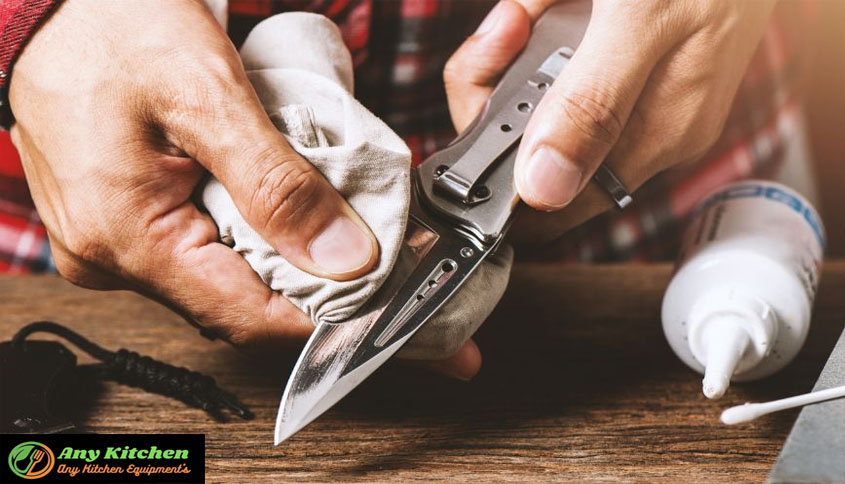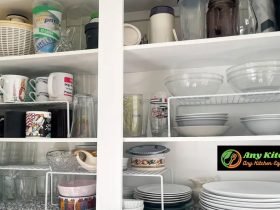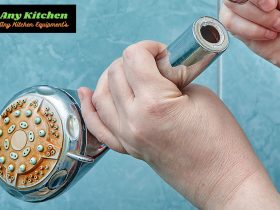In the culinary world, knives are essential tools that chefs and cooks rely on to create their culinary masterpieces. From chopping and slicing to dicing and mincing, a good knife is a chef’s closest companion in the kitchen. However, to maintain food safety and hygiene, it is crucial to understand when a knife must be cleaned and sanitized. Simply rinsing off a knife after use may not be sufficient to ensure the elimination of harmful bacteria or cross-contamination.
In this article, When must a knife be cleaned and sanitized? we will explore the importance of proper knife cleaning and sanitization, the potential risks associated with neglecting these practices, and the recommended methods to maintain a clean and safe kitchen environment. By delving into this topic, we can better appreciate the significance of keeping our knives clean and sanitized, ultimately ensuring the well-being of both the chef and those who savor their culinary creations.
Cleaning a Kitchen Knife
Properly cleaning a kitchen knife is essential for maintaining food safety, preventing cross-contamination, and prolonging the knife’s lifespan. Here are some important steps to follow when cleaning a kitchen knife:
Safety First: Before cleaning the knife, ensure your own safety by handling it with care. Always hold the knife by the handle and avoid touching the sharp blade.
Rinse Immediately: After each use, rinse the knife under warm water to remove any food particles or debris. Use a gentle stream of water and avoid using harsh scrub brushes or abrasive sponges that could damage the blade.
Use Mild Dish Soap: Apply a small amount of mild dish soap to a sponge or soft cloth. Gently scrub the blade, handle, and bolster (the area between the blade and handle) to remove any remaining residue. Be cautious when cleaning the blade to prevent accidental cuts.
Pay Attention to the Handle: The handle of a kitchen knife can accumulate grease, oils, and bacteria. Make sure to thoroughly clean the handle with soap and water, paying attention to any crevices or textured areas.
Avoid Soaking: It is generally recommended to avoid soaking kitchen knives for an extended period. Prolonged exposure to water can lead to corrosion or damage to the blade’s integrity. Clean the knife promptly after use to prevent the need for soaking.
Dry Thoroughly: After washing, use a clean towel to dry the knife completely. Make sure to dry both the blade and the handle to prevent moisture buildup, which can lead to rusting.
Store Properly: Once dry, store the knife in a safe and secure location. Consider using a knife block, magnetic strip, or knife sheath to protect the blade and prevent accidents.
Sharpen and Hone Regularly: In addition to cleaning, maintaining a sharp knife is crucial for safe and efficient cutting. Regularly sharpen and hone your kitchen knife using appropriate tools, such as a sharpening stone or honing rod, to keep the blade in optimal condition.
Remember, proper knife cleaning should be done after each use to prevent the accumulation of bacteria and ensure the knife’s longevity. By following these steps, you can maintain a clean, hygienic, and reliable kitchen knife that will serve you well in your culinary endeavors.
Cleaning a Pocket Knife

Regular cleaning of a pocket knife is essential for maintaining its functionality and extending its lifespan. A dirty knife can accumulate debris, moisture, and residue, which can hinder its performance and potentially lead to corrosion. When cleaning a pocket knife, it’s important to focus on removing dirt and grime from the blade, handle, and other components. Using a soft-bristle brush or compressed air can help dislodge debris, while a mild soap or specialized knife cleaner can be used to clean the blade and handle. After cleaning, thorough drying is crucial to prevent rust or corrosion. Additionally, lubricating moving parts with a specialized knife lubricant helps maintain smooth operation. By regularly cleaning and maintaining your pocket knife, you can ensure that it remains reliable, functional, and ready for use whenever you need it.
Conclusion
In summary, a knife should be cleaned and sanitized after each use, especially when handling different food items or potentially hazardous ingredients. Regular cleaning and sanitization prevent cross-contamination, eliminate harmful bacteria, and ensure the highest standards of food safety and hygiene. By adhering to proper cleaning practices, we maintain the integrity of our knives, uphold food safety standards, and create a healthy and safe environment for culinary endeavors. So, remember to prioritize the cleanliness and sanitization of your knives to ensure not only optimal performance but also the well-being of those who enjoy the meals prepared with them.
Read More: How to sharpen ninja blender blades – 7 Easy Steps
Frequently Asked Questions
When should you clean knives?
Knives should be cleaned after each use to maintain hygiene and prevent cross-contamination. It is essential to clean knives when transitioning between different food items, handling potentially hazardous ingredients, or whenever they appear visibly dirty. Regular cleaning ensures the safety and longevity of the knives while upholding food safety standards.
Which item must be cleaned and sanitized?
Cutting boards, stockpots, prep tables, and other surfaces that come into contact with food all need to be cleaned and sanitized.
Why should knives be cleaned after it has been used?
Knives should be cleaned after each use to remove food particles, residue, and bacteria that may be present on the blade and handle. Proper cleaning prevents cross-contamination, ensures food safety, and maintains the knife’s performance. Regular cleaning also helps prevent the buildup of harmful bacteria and preserves the longevity of the knife.










Leave a Reply